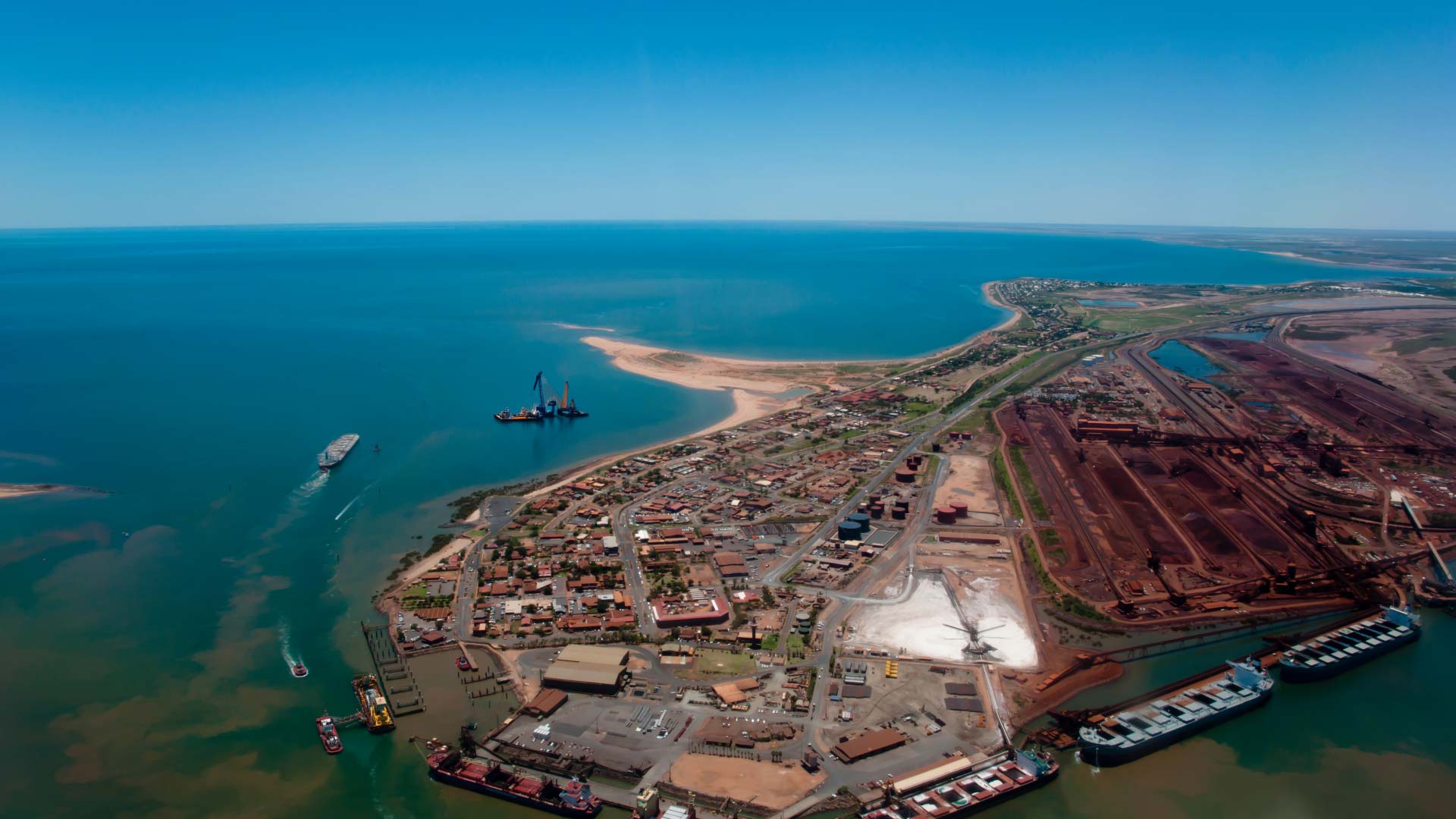About Port Hedland: Australia’s Largest Export Port
Jan De Nul, a renowned Dutch dredging and marine services contractor, has initiated a new dredging program at Australia’s Port Hedland. The dredging vessel J.F.J. De Nul has commenced capital dredging and reclamation activities to advance the development of the Lumsden Point General Cargo Facility and Logistics Hub. This ambitious project aims to increase the port’s capabilities, making it a crucial hub for exports and imports of critical resources and renewable energy components.
Located on Australia’s northwest coast, Port Hedland stands as the country’s largest export port by annual throughput. The port plays a pivotal role in the global supply chain, especially for key commodities like iron ore and emerging battery metals. The expansion project aims to further enhance its capacity to meet the growing demand for battery metals, such as lithium and copper concentrates, as well as to accommodate the import of renewable energy infrastructure, including wind turbines and blades.
Scope of the Dredging and Reclamation Work
Excavation and Material Handling
The cutter suction dredger J.F.J. De Nul will undertake the dredging of up to one million cubic meters of sediment to create essential port features, including:
- Deeper access channels for safer and more efficient navigation.
- Swing basin to facilitate vessel maneuvering.
- Two berth pockets to accommodate various ship types such as bulk carriers, tankers, and roll-on/roll-off vessels carrying wheeled cargo like vehicles.
Land Reclamation for Future Wharf Development
In addition to dredging, the project involves reclaiming a 10-hectare area bordered by a seawall. This reclaimed land will serve as the foundation for the future Lumsden Point wharf structure. Transforming the existing mudflats into a usable platform is crucial for accommodating new port infrastructure and facilitating future expansions.
Environmental and Cultural Heritage Management Plan
Adhering to Environmental Standards
The dredging operations are being conducted under a strict ‘Environmental and Cultural Heritage Management Plan’ to mitigate any negative impacts on the surrounding marine and terrestrial environment. The plan focuses on managing key elements such as:
- Project footprint and sediment management to minimize disturbance.
- Marine environmental quality to protect nearby habitats.
- Protection of surrounding mangroves and marine ecosystems.
Dredged Material Management
The dredged material will be transported via a floating pipeline to a designated reclamation area. The process involves:
- Retaining suitable fill material at the reclamation site for land formation.
- Pumping finer sediment and tailing water to a silt settlement area located three kilometers away. This settlement area, which was established during previous dredging projects, is designed to allow fine particles to settle before surplus water is released back into the port environment.
Ensuring Water Quality During Dredging Operations
Continuous Monitoring and Immediate Response
Throughout the dredging activities, water quality is continuously monitored to ensure it remains within safe limits. In case of potential risks to environmental thresholds, immediate action is taken to minimize any impact on surrounding habitats, including:
- Mangroves and other coastal vegetation.
- Marine organisms such as macroalgae and corals.
Baseline environmental assessments are conducted before dredging begins, with follow-up surveys after the project to evaluate any long-term effects on the ecosystem.
Key Stakeholder Perspectives
Richard King, Pilbara Ports
Richard King, Dredging and Survey Manager at Pilbara Ports, emphasized the significance of the project: “We are pleased to collaborate closely with Jan De Nul and our Dredging Team on the complex dredging and reclamation efforts at Lumsden Point. The reclaimed areas will transform the existing mudflats into the foundation for future infrastructure, making this phase critical to the overall success of the Lumsden Point project.”
Wim Cosaert, Jan De Nul Group
Wim Cosaert, Area Manager at Jan De Nul Group, highlighted the project’s complexity, noting, “The relatively small reclamation area and soft substrate conditions require us to distribute the material evenly to form a stable platform for the future wharf. As a result, the fine material and water entering the reclamation zone must be pumped out immediately to a distant settlement area, where the sediment can settle before the water is returned to the environment.”
Benefits of the Port Hedland Expansion Project
Boosting Export Capacity for Battery Metals
The expansion of Port Hedland will significantly increase its ability to export critical battery metals, supporting Australia’s growing role in the global energy transition. Enhanced port infrastructure will enable the efficient export of:
- Lithium
- Copper concentrates
Facilitating Renewable Energy Imports
The improved facilities will also support the import of large renewable energy components such as wind turbine blades and structures, positioning Port Hedland as a key player in the renewable energy supply chain.
Conclusion
The dredging and reclamation activities at Port Hedland mark a significant step towards enhancing the port’s capacity and infrastructure. By adhering to rigorous environmental management practices and collaborating with industry experts, the project aims to balance economic growth with sustainability, ensuring Port Hedland continues to thrive as a major export hub.
